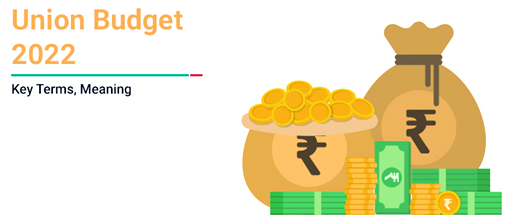



 Disclaimer: Copyright infringement not intended.
Disclaimer: Copyright infringement not intended. The Union Budget is also known as the annual financial statement (AFS) for a particular fiscal year. It is presented by the government to highlight its expenditure and receipts during the financial year. Under Article 112 of the Constitution, an AFS has to be laid before Parliament in respect of every financial year which runs from April 1 to March 31.
The budget or AFS also outlines the estimates of the government's accounts for the next fiscal year, known as budget estimates. It may be noted that the budget for the upcoming fiscal year has to be sanctioned by the parliament. Without its approval, the government cannot draw from the Consolidated Fund of India.
The Economic Survey is a flagship document of the finance ministry. It is presented every year ahead of the Union Budget. The Economic Survey provides detailed information about the Indian economy over the past financial year. Along with the current state of the economy, the Economic Survey provides the economic outlook. A team led by the Chief Economic Advisor prepares the document.
The document is presented in both houses of Parliament a day before the Union Budget is presented. The first Economic Survey was presented in the year 1950-51 and till 1964, it used to be presented along with the Union Budget.
For common people, the Economic Survey is a useful document to understand the state of economic affairs in India and impact of the decisions made by the Union government.
Inflation, usually expressed in percentages, is a quantitative measure of the rate at which products and services in an economy are increased over a certain period of time. When the price of a certain basket of commodities increases due to internal or external economic factors, it can be termed as a rise in inflation.
A rise in inflation indicates a decrease in the country's currency value and purchasing power. While the term has more to do with the central bank’s policies, it won’t be surprising if the finance minister mentions the term during the budget speech.
Fiscal policy basically outlines the estimated taxation and government spending and serves as a key instrument to monitor the country's economic position. The Fiscal policy denotes adjustments in spending level and tax rates and also refers to the use of government spending and tax policies to influence economic conditions, especially aggregate demand for goods and services, employment, inflation, and economic growth.
It goes hand in hand with monetary policy, through which the Reserve Bank of India (RBI) influences the nation’s money supply. In case of an ongoing recession, the government may employ an expansionary fiscal policy by lowering taxes to increase aggregate demand.
Fiscal deficit means when a government's total expenditure exceeds total revenue, excluding any external borrowings. However, the fiscal deficit should not be read same as that of debt, which can be an accumulation of many yearly deficits.
It is extremely pivotal for developing countries like India to maintain a healthy fiscal deficit ratio as the total revenue generated is not enough for the government to meet all its revenue and capital expenditure.
Since the government requires a large sum of money to fund infrastructural development, developing countries often run on a fiscal deficit towards asset creation. This is why some economists argue that fiscal deficit is not really a bad indicator but a stance that indicates development.
An ideal fiscal deficit should not exceed 4 per cent of the Gross Domestic Product (GDP).

Divestment is process involving the sale of existing assets. It is the opposite of investment.
The government has been looking to divest many of its assets which have turned sour over the years. In last year's budget, the government set target on divestments as it looked to close the fiscal deficit gap.
Capital expenditure (capex) refers to funds used by the government in this case — to acquire, maintain or upgrade physical assets such as property, new infrastructural projects or buying new equipment.
Capital expenditure is classified as a long-term expenditure and usually includes expenses incurred by the government towards asset building, including developmental and infrastructural projects.
When a government spends money on big-ticket projects, the expenses incurred are usually categorized as capital expenditure. Such expenses are not recurring in nature.
While capital expenditure (capex) is a broad economic term used by several companies, it holds importance in a budgetary context.
Customs duty is a levy that is charged when certain goods are imported into/exported out of the country. Eventually, these expenses are passed on to the end customer. Since customs duty is outside the purview of Goods and Services Tax (GST), the government has room to announce changes, if it wants, in its budget presentation. It is a key component of the budget and many sectors will be keenly awaiting an announcement regarding customs duty.
Unlike customs duty, changes to the Goods and Services Tax (GST) are not announced in the budget. The GST Council takes a call on any changes in the GST slabs and structure. While Finance Minister Nirmala Sitharaman may speak about GST in her Budget speech but no changes in this regard will be announced in the budget.
Direct taxes include income tax and corporate tax. The government is unlikely to make any major announcements related to income tax this year. However, some tweaks can be expected.
The Current Account Deficit (CAD) is a measurement of the country's trade, where the value of imported goods and services exceeds the value of exports. It is a component of the country's balance of payments.
A revenue deficit occurs when the government's net income or revenue generation is less than the projected net income.
This is a situation where the actual amount of revenue or expenditure is not in line with budget revenues and expenditure. It is a key indicator to determine whether the government is overspending from its regular income.

Revenue surplus is the opposite of a revenue deficit. It is a situation where the government's net realized income or revenue generation is more than the projected net income. The actual revenue and expenditure is more than the budget estimates.
Expenditure usually has two components - plan and non-plan expenditure.
The plan expenditure covers budget estimates that are determined after discussion with all stakeholders or ministries.
Non-plan expenditure, on the other hand, mostly involves revenue expenditure, though it also includes the capital expenditure.
These are expenses incurred by the government on interest payments, statutory transfers to state/Union Territories, pension payments and salaries of government employees.
Non-plan expenses constitute a major part of the government's budgetary expenses. Debt servicing, defence expenditure, and interest payments comprise the biggest expenses under the category.
© 2024 iasgyan. All right reserved